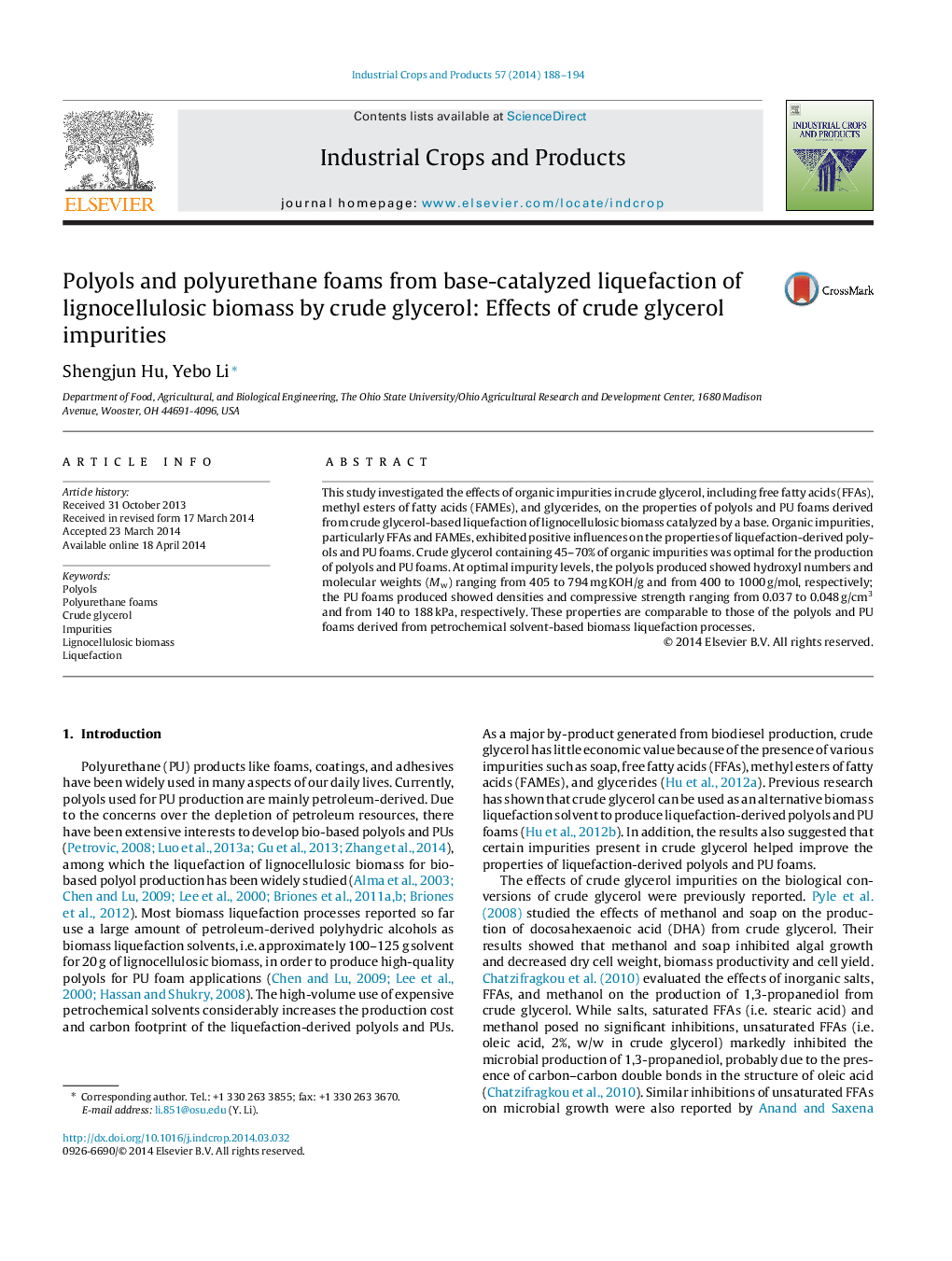| Article ID | Journal | Published Year | Pages | File Type |
|---|---|---|---|---|
| 4513332 | Industrial Crops and Products | 2014 | 7 Pages |
•Base catalyzed liquefaction of lignocellulosic biomass by crude glycerol.•Organic impurities in crude glycerol improved the performance of biopolyols.•Optimal levels of impurities in crude glycerol were determined for the process.•Polyurethane foam with satisfied performance was produced from the biopolyols.•The polyols properties were comparable to that of petroleum solvent-based process.
This study investigated the effects of organic impurities in crude glycerol, including free fatty acids (FFAs), methyl esters of fatty acids (FAMEs), and glycerides, on the properties of polyols and PU foams derived from crude glycerol-based liquefaction of lignocellulosic biomass catalyzed by a base. Organic impurities, particularly FFAs and FAMEs, exhibited positive influences on the properties of liquefaction-derived polyols and PU foams. Crude glycerol containing 45–70% of organic impurities was optimal for the production of polyols and PU foams. At optimal impurity levels, the polyols produced showed hydroxyl numbers and molecular weights (Mw) ranging from 405 to 794 mg KOH/g and from 400 to 1000 g/mol, respectively; the PU foams produced showed densities and compressive strength ranging from 0.037 to 0.048 g/cm3 and from 140 to 188 kPa, respectively. These properties are comparable to those of the polyols and PU foams derived from petrochemical solvent-based biomass liquefaction processes.
